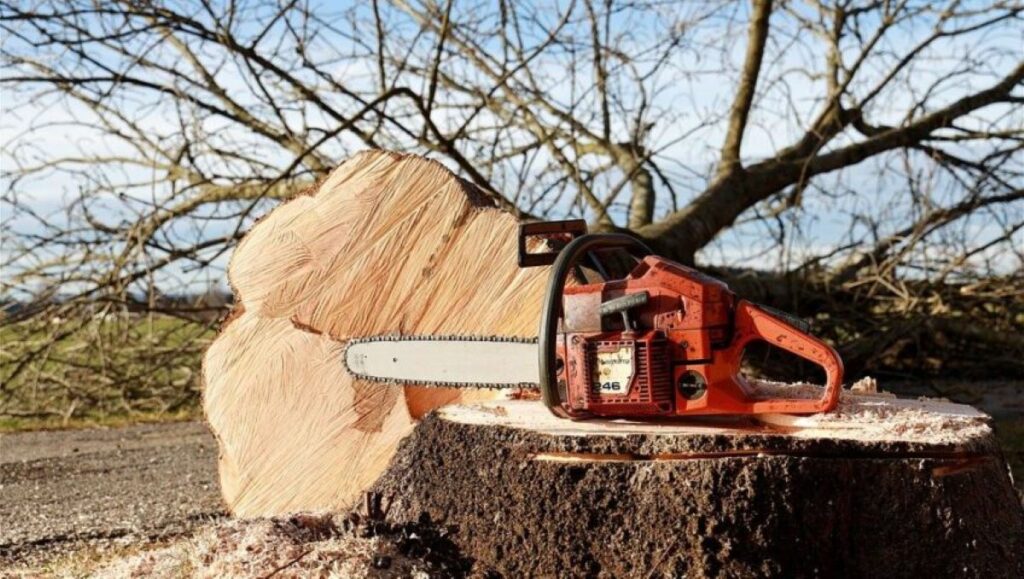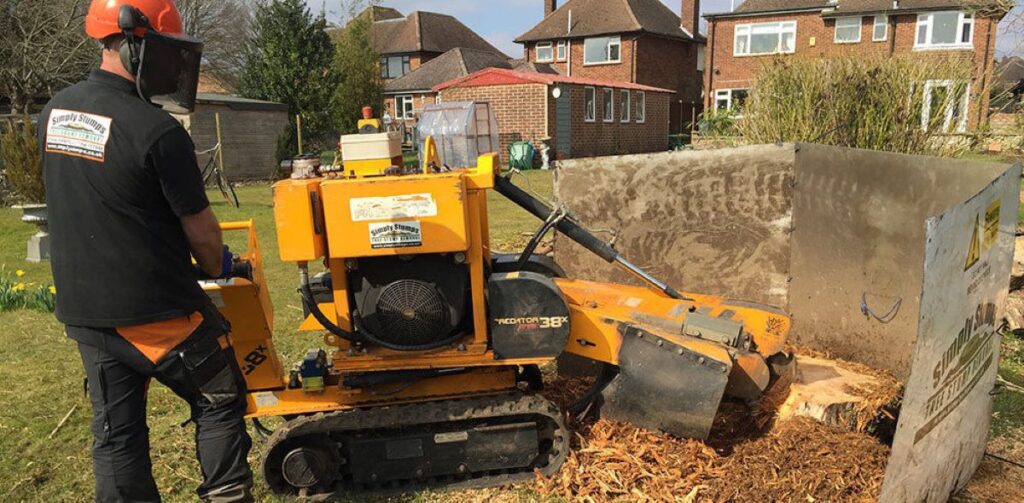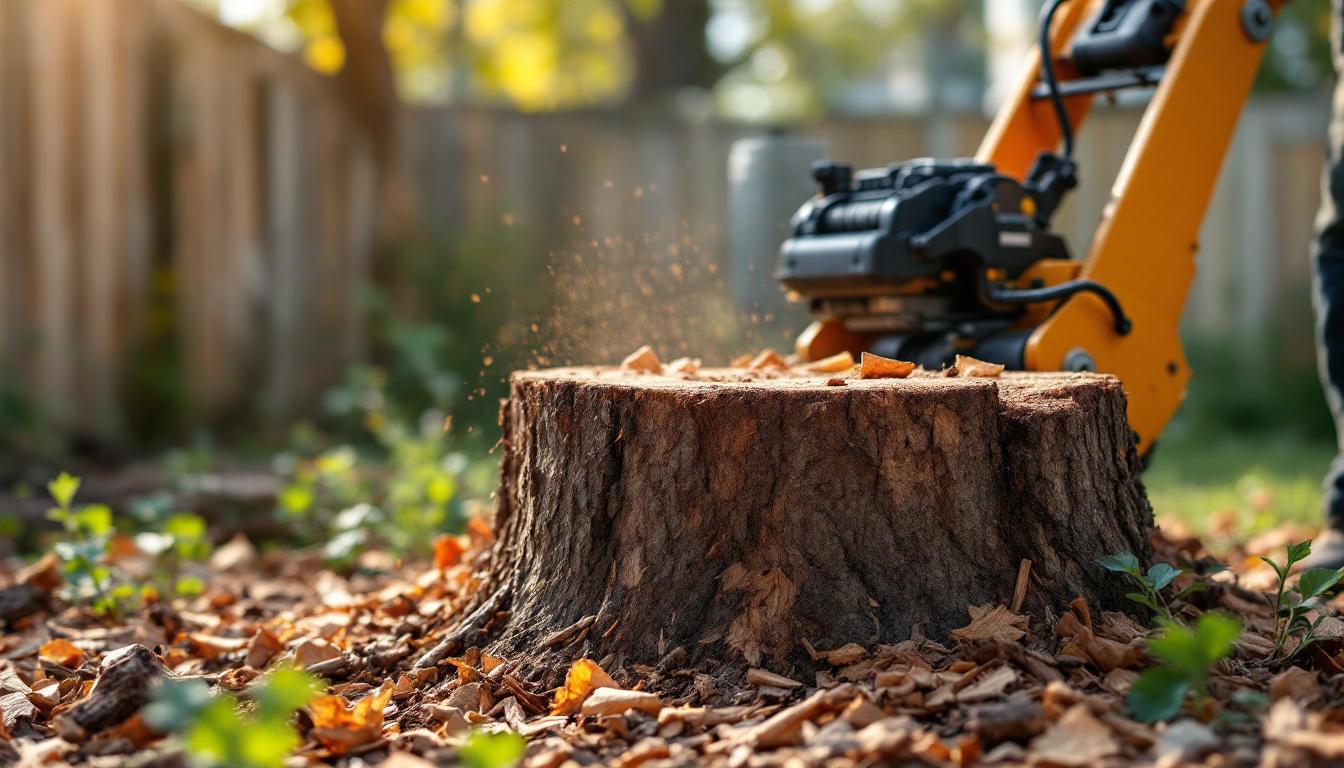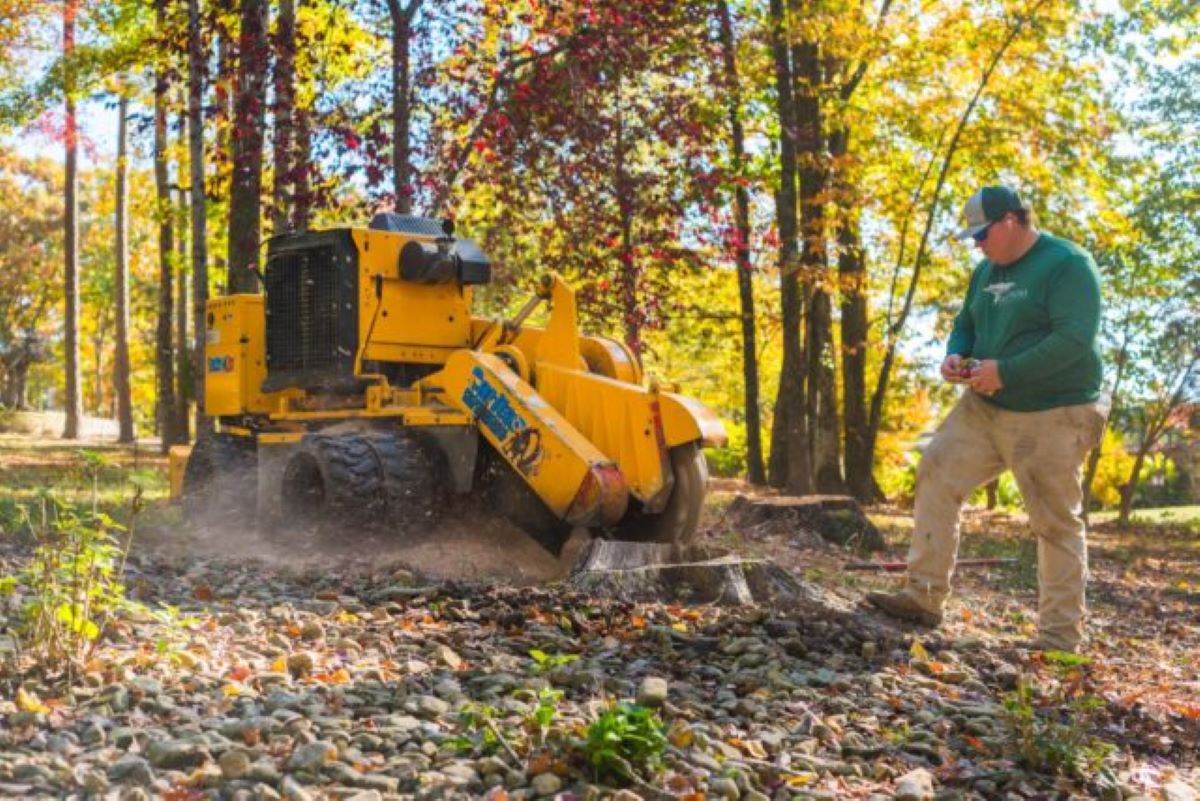Understanding Stump Grinding and Removal
When it comes to garden cleanup, one of the most crucial tasks is dealing with tree stumps left behind after tree removal. Two primary methods for addressing this issue are stump grinding and stump removal. Understanding the difference between these approaches can help you make the best decision for your garden.
What is Stump Grinding?
Stump grinding involves using specialized machinery to mechanically grind down the stump and its root system into small wood chips. This process efficiently reduces the stump’s size without disturbing the surrounding soil too much. The result is a more manageable landscape without the unsightly presence of a large stump.
The grinder operates by rotating sharp blades that chew through the wood, gradually lowering the stump until it is level with or below the ground. This method is generally quicker than complete stump removal and can often be done in a matter of hours, depending on the stump’s size. Additionally, the wood chips produced during the grinding process can be repurposed as mulch, providing a sustainable option for garden maintenance and helping to retain moisture in the soil.
What is Stump Removal?
Stump removal, on the other hand, is a more extensive process that involves excavating the entire stump, including the root system, from the ground. This method can be labor-intensive and time-consuming, often requiring heavy machinery to dig deep into the soil to extract the roots completely.
While stump removal may be more thorough, it can also leave a larger hole in your yard that requires filling and reseeding. Homeowners must consider this impact on their landscaping when choosing between the two methods. Furthermore, stump removal can sometimes lead to soil disturbance that may affect nearby plants and trees, potentially leading to issues such as erosion or instability in the surrounding area. Therefore, it’s essential to weigh the pros and cons of each method, taking into account the specific conditions of your garden and your long-term landscaping goals.
The Importance of Stump Grinding and Removal for Garden Cleanup
Addressing leftover tree stumps is not just about aesthetics; it also plays a crucial role in the overall health and safety of your garden. Understanding these impacts can help homeowners appreciate the value of timely stump grinding and removal.
Safety Concerns with Leftover Stumps
Leftover tree stumps can pose several safety hazards, especially for children and pets that may play in the garden. Stumps can be trip hazards, leading to potential injuries. Additionally, they may attract pests such as termites or beetles that can spread to other trees or plants in your garden.
With an effective stump removal strategy, you can minimize these risks, creating a safer environment for all. Regular inspections of your garden can help identify and mitigate these issues before they escalate. Furthermore, stumps can also decay over time, leading to unsightly holes and uneven ground, which can further complicate landscaping efforts. Ensuring that your garden is free from such hazards not only protects your loved ones but also promotes a more enjoyable outdoor experience.
Aesthetic Impact on Your Garden
Aesthetically, tree stumps can significantly detract from the visual appeal of your landscape. They can make your garden appear unkempt and neglected. By opting for stump grinding or removal, homeowners can enhance the overall look of their yards, making it a more inviting space for relaxation and enjoyment.
A well-maintained garden not only increases your property’s curb appeal but also provides a pleasant environment that can be enjoyed by your family, guests, and even potential buyers if you’re considering selling your home. Moreover, removing stumps opens up new opportunities for landscaping, allowing homeowners to plant new flowers, shrubs, or even trees without the hindrance of old stumps. This can lead to a more vibrant and diverse garden, fostering a thriving ecosystem that attracts beneficial wildlife, such as butterflies and birds, enhancing the overall gardening experience.

The Process of Stump Grinding and Removal
Understanding the processes involved in stump grinding and removal can equip homeowners with the necessary knowledge to tackle this aspect of garden cleanup effectively. Knowing the tools and steps involved can assist in making informed decisions. This knowledge not only helps in maintaining the aesthetic appeal of your garden but also ensures the safety of your outdoor space by preventing potential hazards associated with decaying stumps.
Tools and Equipment Used
For stump grinding, professionals typically use high-powered stump grinders that come in various sizes. These machines are designed specifically for the task and can efficiently handle different stump sizes. Smaller, portable grinders can be used for tight spaces, while larger, more powerful models are suited for bigger stumps and tougher wood types. These grinders work by utilizing sharp, rotating blades that chip away at the stump, reducing it to mulch that can be reused in the garden. Visit https://training.gov.au/training/details/AHCARB206A to get about undertake stump removal.
In contrast, stump removal often requires excavators, backhoes, or other heavy machinery capable of digging up the roots completely. Depending on the size of the stump and the depth of its roots, different tools may be necessary to achieve the best results. For instance, a chainsaw may be used to cut the stump down to a manageable height before the excavation begins, making the process more efficient. Additionally, safety gear such as goggles, gloves, and ear protection is essential for operators to ensure a safe working environment.
Step-by-Step Procedure
The step-by-step procedure for stump grinding generally includes the following phases:
- Evaluation of the stump and area for potential hazards.
- Using the stump grinder to grind the stump down to ground level.
- Clear the area of debris and excess wood chips.
For stump removal, the steps typically consist of:
- Assessing the site and surrounding landscape to avoid damage to other plants.
- Excavating around the stump to expose the roots.
- Removing the stump and roots entirely from the ground.
- Filling the hole left behind, followed by reseeding or planting.
Throughout these processes, it is crucial to consider the environmental impact. For instance, the mulch produced from stump grinding can be beneficial for soil health and moisture retention when used as ground cover. Moreover, understanding the local ecosystem can guide homeowners in deciding whether to plant new vegetation in the area or to allow it to naturally regenerate. This thoughtful approach not only enhances the beauty of the landscape but also promotes biodiversity and sustainability in the garden.
Hiring Professionals vs DIY Stump Removal
When it comes to dealing with tree stumps, homeowners often face a choice between hiring professionals or tackling the job themselves. Both options have their advantages and disadvantages, which are essential to consider before making a decision.
Pros and Cons of Hiring Professionals
Hiring professionals for stump grinding and removal ensures that the job is done quickly and safely. Experienced arborists have access to specialized equipment and the skills needed to handle the task effectively. This can save you time and effort, allowing you to focus on other aspects of your garden cleanup.
However, professional services can be costly, and the expense may deter some homeowners from seeking assistance. Additionally, if you’re on a tight budget, professional removal might not be a feasible option.
Pros and Cons of DIY Stump Removal
Opting for DIY stump removal can save you money, and engaging in the task can be satisfying. Many homeowners appreciate the hands-on approach and the ability to directly control the process. However, this method requires physical exertion and may involve the risk of injury, especially when using heavy machinery.
Furthermore, without the right equipment or experience, the job can take significantly longer than anticipated, leading to frustration. Weighing these factors will help you determine the most suitable option for your needs.

Cost Considerations for Stump Grinding and Removal
Cost is an important factor for many homeowners deciding between stump grinding and removal. Understanding what influences these costs is essential to making an informed decision that aligns with your budget.

Factors Affecting the Cost
Several factors contribute to the total cost of stump grinding or removal. These include:
- The size of the stump – Larger stumps will generally cost more to remove.
- The depth of the roots – More extensive root systems may require additional work and equipment.
- Accessibility of the site – If the stump is located in a hard-to-reach area, it may increase labor costs.
- Location – Pricing can vary based on geographical locations and local market rates.
Tips to Save on Stump Removal Costs
To save on stump removal costs, consider the following tips:
- Compare quotes from multiple professionals to find the best price.
- Schedule stump removal during the off-peak season to negotiate better rates.
- Combine stump removal with other landscaping services for potential discounts.
- Consider doing part of the work yourself, such as site preparation, to reduce labor hours.
By being informed and proactive, homeowners can effectively manage the costs associated with stump grinding and removal, ensuring their garden cleanup is both efficient and budget-friendly.
More to Read : Stump Grinding Prices: What to Expect When Removing Tree Stumps
